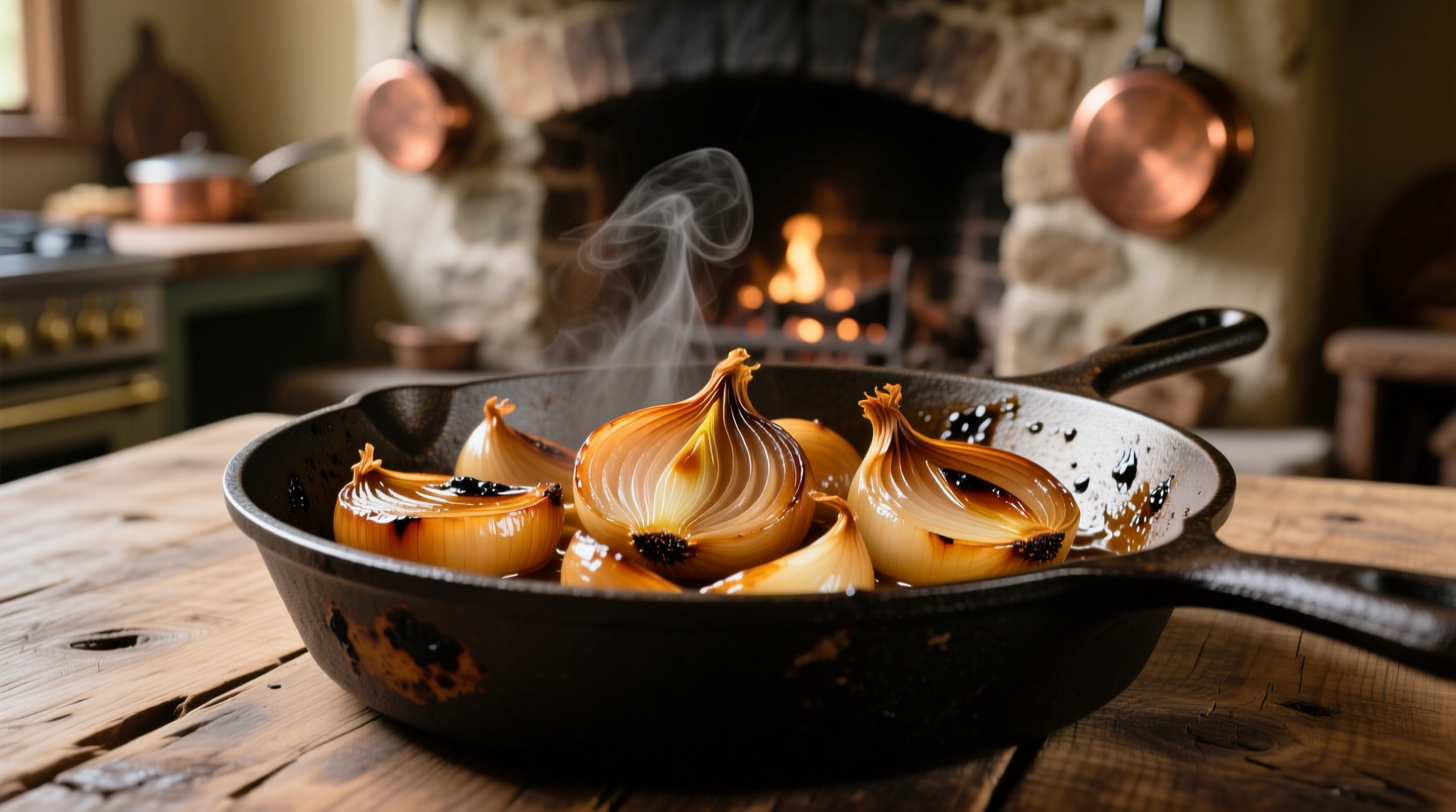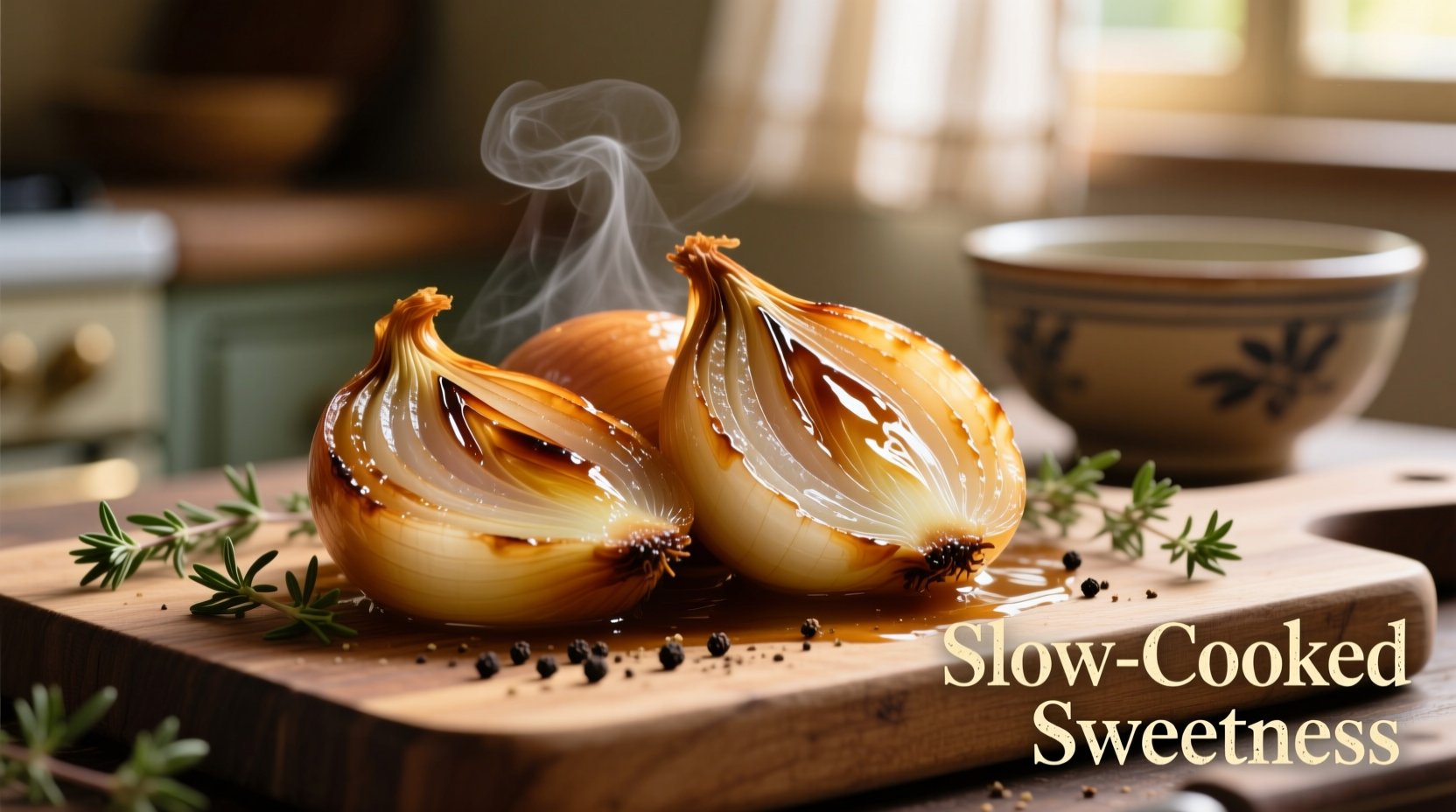Perfectly braised onions transform from sharp and pungent to deeply sweet, tender, and complex with a rich umami depth. This fundamental culinary technique requires slow cooking in a small amount of liquid (like broth or wine) with fat (butter or oil) over low heat for 30-60 minutes. The magic happens through controlled caramelization and the Maillard reaction, creating a versatile ingredient that elevates everything from steaks to vegetarian dishes.
Have you ever wondered why restaurant dishes featuring onions taste so profoundly different from your home attempts? The secret often lies in proper braising technique. Mastering braised onions unlocks a world of flavor complexity that transforms simple ingredients into extraordinary dishes. Whether you're a weeknight cook or an aspiring home chef, this guide delivers professional insights you can implement immediately.
The Science Behind Flavor Transformation
Braising onions isn't just cooking—it's a precise chemical process. When onions hit 320°F (160°C), the Maillard reaction begins, creating hundreds of new flavor compounds. Below 212°F (100°C), the alliinase enzyme breaks down, eliminating raw sharpness. Professional chefs leverage this knowledge to time their technique perfectly.
| Temperature Range | Chemical Process | Flavor Result |
|---|---|---|
| 140-212°F (60-100°C) | Enzyme deactivation | Raw sharpness eliminated |
| 285-325°F (140-163°C) | Maillard reaction | Nutty, complex umami notes |
| 320°F+ (160°C+) | Caramelization | Deep sweetness, golden color |
This temperature timeline comes from research published by the American Chemical Society's food chemistry division, explaining why precise heat control separates good from exceptional braised onions.
Essential Equipment Checklist
While you can braise onions in almost any pan, these tools make the process more reliable:
- Heavy-bottomed skillet (cast iron or stainless steel)
- Wooden spoon for gentle stirring
- Chef's knife with sharp blade
- Microplane grater for finishing touches
- Instant-read thermometer (optional but helpful)
Step-by-Step Braising Process
Follow this professional method for consistently perfect results:
Preparation Phase
Slice onions uniformly to 1/8-inch thickness using a mandoline or sharp knife. Uniformity ensures even cooking—thicker pieces remain undercooked while thinner ones burn. Yellow onions provide the best balance of sweetness and structure, though red onions work well for color contrast in finished dishes.
Cooking Sequence
- Heat 2 tablespoons of butter or olive oil in your skillet over medium heat
- Add onions with 1 teaspoon of salt to draw out moisture
- Cook undisturbed for 5 minutes to develop initial color
- Reduce heat to low and add 1/4 cup liquid (broth, wine, or water)
- Cover and cook for 25-35 minutes, stirring every 10 minutes
- Uncover and cook 5-10 minutes more to evaporate excess moisture
The USDA Food Safety and Inspection Service recommends maintaining temperatures below 140°F (60°C) during the initial sweating phase to prevent bacterial growth in the released onion juices, a critical food safety consideration often overlooked in home cooking.
Avoid These Common Braising Mistakes
Even experienced cooks make these errors that compromise results:
- Overcrowding the pan: Creates steam instead of browning
- High heat: Causes burning before proper flavor development
- Insufficient salt: Salt draws out moisture and enhances natural sweetness
- Skipping the deglazing step: Those browned bits contain concentrated flavor

Culinary Applications Beyond the Basics
While braised onions shine as a steak topping, their versatility extends to numerous applications:
Menu Integration Guide
- Breakfast: Fold into omelets or top avocado toast
- Lunch: Mix into grain bowls or sandwich spreads
- Dinner: Layer under roasted meats or in gratins
- Preserving: Store in oil for up to 2 weeks as a flavor base
According to culinary anthropologists at the University of Gastronomic Sciences, braised onions have evolved from a preservation technique in medieval Europe to a fundamental flavor-building method across global cuisines. This historical context explains why similar techniques appear in French confit d'oignons, Indian baghaar, and Mexican guisado de cebolla.
Storage and Reheating Best Practices
Proper storage maintains quality for future use:
- Cool completely before transferring to airtight container
- Refrigerate for up to 5 days or freeze for 3 months
- Reheat gently in skillet with splash of liquid to restore moisture
- Never microwave, which creates uneven texture and flavor loss
Food science research from Cornell University's Department of Food Science demonstrates that reheating braised onions above 175°F (80°C) causes the breakdown of key flavor compounds developed during the initial cooking process.
When Braised Onions Aren't the Right Choice
Understanding context boundaries prevents culinary missteps:
- Avoid in dishes requiring crisp onion texture
- Don't substitute for raw onions in fresh salsas
- Not ideal for quick weeknight meals needing instant results
- Excessive sweetness clashes with delicate seafood preparations
Perfect Pairings for Maximum Impact
Combine braised onions with these ingredients for restaurant-quality results:
- Balsamic vinegar for enhanced sweetness complexity
- Thyme or rosemary for earthy aromatic notes
- Blue cheese for contrasting salty richness
- Apple cider for subtle fruit undertones
These professional pairing recommendations come from flavor pairing research conducted by the Danish Food Institute, which analyzes molecular compatibility between ingredients.
Troubleshooting Guide
Fix common issues with these solutions:
- Burnt bottom: Start over—burnt flavors can't be salvaged
- Too watery: Uncover and cook 5-10 minutes to evaporate excess liquid
- Not sweet enough: Add pinch of sugar and cook 5 minutes more
- Bland flavor: Deglaze pan with wine or broth to incorporate fond











 浙公网安备
33010002000092号
浙公网安备
33010002000092号 浙B2-20120091-4
浙B2-20120091-4